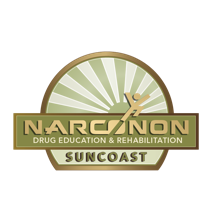Understanding
the Opioid Epidemic and the Three Waves of Opiate Related Overdoses

It is no secret that our country’s ongoing drug crisis has been heavily attributed to the opioid epidemic, but how did we get here? How did drugs like heroin make such a big comeback and later evolve into even more dangerous street drugs such as fentanyl? As overdoses continue to rise as more and more fentanyl and synthetic opioids continue to wreak havoc on addicts and their families, it is important to understand why these drugs became so popular in the first place if we are ever going to have any real fight against them. The number of drug overdose fatalities in 2018 was 4 times higher than in 1999, and nearly 70% of all overdoses in 2018 were opioid-related. The opioid epidemic and resulting overdoses can be depicted in three waves (cdc.gov).
First Wave:
The first wave began in the 1990s with a spike in opioid prescriptions and a rise in prescription-related overdoses beginning in 1999. Our country’s over-reliance on opioids for pain management during this time and an influx in prescriptions began the dark road that would follow over the next two decades. As people became more and more addicted to pills, doctor shopping amongst addicts and dealers became a common practice and before long, strong painkillers designed to treat chronic pain became popular street drugs. Prescription drug overdoses continued at a steady rise throughout the 2000s before the second wave hit in 2010.
Second Wave:
As the country cracked down on pill farms and doctor shopping became more difficult with laws being put in place to counteract this method of drug-seeking, street prices on oxycodone and similarly potent painkillers began to skyrocket as demand superseded supply. Enter heroin. In 2010 heroin overdoses began to skyrocket as opiate addicts sought cheaper and stronger ways to feed their addictions. As heroin made its big comeback, addicts and their families’ lives were being destroyed at a rapid pace. As bad as the spike in overdoses was with the second wave, the third wave would be an unprecedented evil, as an even stronger and far more dangerous drug than heroin would become wildly popular amongst addicts and dealers looking for a cheap hook.
Third Wave:
This third wave began in 2013 with the rise of illicitly manufactured fentanyl, with a wide array of street drugs, including heroin, pain killers, and cocaine, being laced with the deadly drug. Within a few years, fentanyl-related overdoses had soared, and the problem has continued to escalate to this day. Fentanyl is cheap to produce, highly addictive, and up to 100 times more powerful than morphine. From 2010-2017, overdoses that involved fentanyl rose from 14.3% to 59.8%, showing just how much the drug has invaded our society in a relatively short amount of time. (cdc.gov) Illegal fentanyl is created in labs with no approval guidelines or ways to ensure its dosages are not lethal. It is sold in powder form, dropped onto blotted paper, put in eye droppers or nasal sprays, or made into lookalike pain killers. (drugabuse.gov) With no regulation coupled with the potency, one of the deadliest drugs to ever see the streets was created. If you look at a graph depicting the number of fentanyl and other synthetic opioid overdoses over the last several years, the sharp incline is striking and alarming.
The pattern with each wave is that it has gotten worse, and while it is hard to imagine something more lethal and deadly than fentanyl, I am sure a lot of people felt that way when heroin made its big comeback after prescription pills kicked off the epidemic. It can always get worse before it gets better if we are not diligent in understanding what is happening and fail to do something to help the addicts before they succumb to this epidemic.
If you or anyone you know is seeking help, please reach out.
